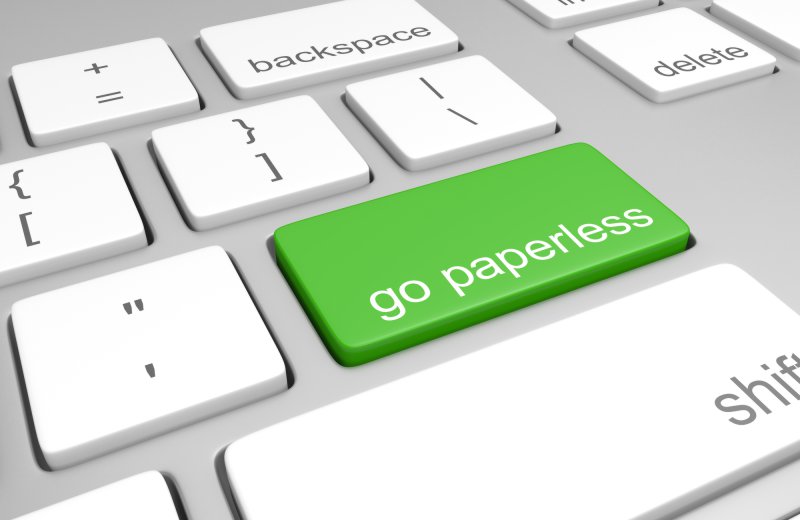Last Updated on June 24, 2021 by Madelein Wolfaardt
Six tips to safely start or transition into a more streamlined venture.
Laura D. Adams
In addition to saving trees, there are many advantages to running a paperless solo business. Not only does paper demand time to process and physical space to store, but it may contain confidential information that puts you or your customers at risk.
Use these tips to safely start or transition your solo business into a paperless venture.
1. Request e-documents
Every time you receive paper mail, find out if you can turn it into a digital document. Most financial and utility paperwork — such as bank statements, credit card bills, insurance documents and cellular bills — can be turned into e-documents when you have an online account.
Some companies even offer incentives, such as waiving account fees or qualifying for rewards, when choosing e-statements and e-bills.
2. Set up secure digital storage
Your financial institutions may only offer free access to online documents for a limited time. Be sure you understand their policies or potential fees to download documents later on.
If you want to store your digital documents, it’s easy to do. You can download statements and bills or snap photos of receipts throughout the year.
Once you have business e-documents, you’ll need to keep them organized and secure. Consider setting up a system on your computer with a primary business folder and sub-folders. Use file names for your documents that include the year, month and category, so it’s easy to find what you need later on.
You can add a layer of protection by requiring a password to access your main business folder. And always update your operating system and security software to ward off cybercriminals.
And be sure to store important e-documents in multiple places, so they can’t get lost in a disaster or computer crash. In addition to your computer, you might keep a copy of all your business documents on an external drive and a secure cloud-based option, such as Google Drive, Amazon S3 or Dropbox.
3. Try simple scanners
The easiest way to digitize paper documents is with a free scanning app, such as Adobe Scan or Genius Scan. These tools have excellent features, including multi-page scans, text-recognition, editing, storage and exporting that you can manage from your smartphone.
If you have a printer, it may have a built-in flatbed scanner; however, you may find using a scanning app more convenient. The scan apps typically integrate with other apps, so you can instantly file e-documents where you like.
4. Use e-signatures
There’s no need to print out contracts or long documents to sign them. Sending or receiving e-signatures is legally binding and allows you to do business from anywhere.
Try an e-signature program, such as Adobe or DocuSign, that allows you to sign documents on various operating systems and devices. They track the status of required actions, encrypt data and can even store your documents.
5. Pare down old paper over time
If you have an office currently stuffed with paper files, don’t let that keep you from going paperless. You can implement a digital system now and pare down or eliminate your old paper documents over time. Sort through your paper files and create three stacks for:
- Shredding.
- Scanning and shredding.
- Keeping and filing.
6. Know what paper to keep
Depending on your business, there may be certain paper documents that you need to keep, such as legal documents with original seals and signatures, titles to vehicles and property deeds. If you’re not sure, consult with an attorney or accountant before tossing it.
In addition to saving trees and freeing up more office space, going digital can increase your business efficiency. A paperless system streamlines your processes, makes it easier to collaborate with teams and improves your customer experience.
Once you’ve lightened your incoming and outgoing paper load, you’ll feel great about saving time, money and never having to open up a heavy filing cabinet again.

